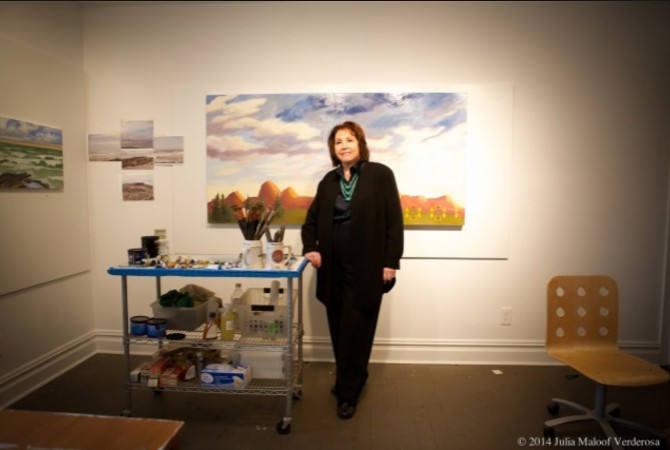'Kay WalkingStick: An American Artist' on view in Washington
By Daniel Aloi
A new exhibition at the Smithsonian Institution’s National Museum of the American Indian in Washington, D.C., is the first major career retrospective chronicling the artistic journey of Professor Emerita Kay WalkingStick.
With more than 65 paintings, drawings, small sculptures, notebooks and diptychs, “Kay WalkingStick: An American Artist” covers 9,500 square feet and features works from the celebrated Cherokee artist’s collection, the museum and private lenders.
Born in 1935 in Syracuse, New York, WalkingStick has explored her Indian identity in her art throughout her career. An established artist who first taught at Cornell from 1988-90, she returned in 1992 as a full professor, teaching painting and drawing in the Department of Art and retiring to paint full time in 2005.
The exhibition is arranged chronologically and thematically in five sections, including “Italian Romance,” with work inspired by WalkingStick’s time in Italy while teaching in the Cornell in Rome Program, and “Landscape: The Power of Native Place,” an ongoing source of fascination for the artist.
Many of her best-known works are in the retrospective, including diptychs pairing abstract and representational painting, the 36-panel “Chief Joseph” series (1974-76), and landscapes of the American Southwest and ancient Indian sites. The museum has produced a 208-page exhibition catalog, a short video profile of the artist, and a location-aware app for museum visitors with enhanced audio and visual content.
The exhibition, on display through Sept. 18, opened last November with a symposium, “Seizing the Sky: Redefining American Art.” Public programs include a conversation Feb. 6 on contemporary American art and culture with WalkingStick and Jeff Chang, author of “Who We Be: The Colorization of America.”
Media Contact
Get Cornell news delivered right to your inbox.
Subscribe
